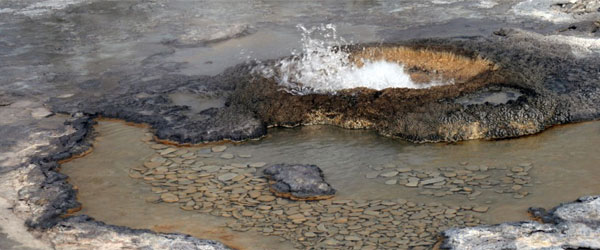Over the years, I’ve had my fair share of ups and downs in the lab. The latter quite often centering on a failed or plainly weird PCR experiment.
As I’ve gone on and become ever more fastidious about my lab practices I’ve realized that the majority of these little calamities were perfectly avoidable. In my new e-book, The Bitesize Bio Guide to PCR, I aim to impart much of my hard-earned and entrenched wisdom with readers, who like me, prefer a simple PCR life.
Standard PCR revolutionized our ability to study a small fragment of DNA or RNA by replicating its number thousands-fold. This small leap was only the beginning, however, and paved the way for much bigger and better technology to come our way. Today, while many researchers and clinical services still depend on standard PCR techniques, the majority of us are also seeking highly precise and quantitative solutions, including quantitative real-time PCR (qPCR) and more recently digital PCR (dPCR).
This e-book is here to help you figure out the basic practices that are essential for getting your PCR, qPCR or dPCR experiment right. By focusing on the ‘how to fix’ element, this e-book provides an essential PCR trouble-shooting guide for any student or researcher using PCR in the lab.
Enjoying this article? Get hard-won lab wisdom like this delivered to your inbox 3x a week.

Join over 65,000 fellow researchers saving time, reducing stress, and seeing their experiments succeed. Unsubscribe anytime.
Next issue goes out tomorrow; don’t miss it.
And here’s a little sneak preview of the e-book contents:
Chapter 1 Introduction
Main types of PCR
What this book will do for you
Chapter 2 Standard PCR
No bands
Missing or non-optimized PCR reagents
Gel electrophoresis
DNA polymerase
GC-rich targets
Primers
Sample quality
Weak bands
Reaction components
Non-optimal PCR program
Extra bands
Primer dimer formation
Unknown PCR product
Bands appearing in negative controls
Alternative PCR methods
Nested PCR
Touchdown PCR and Stepdown PCR
Multiplex PCR
General PCR troubleshooting guide
Useful References
Chapter 3 Quantitative real-time PCR (qPCR)
Hydrolysis (Taqman) probes
Dual Hybridization (FRET) Probes
SYBR Green Dye
No fluorescent signal
qPCR assay set-up
Primer/probe design
Plate preparation
Low sensitivity (high CT values)
Biological samples
Primer design
qPCR assay set-up
Non-specific amplification
Primer dimer formation
Poor primer specificity
Genomic DNA contamination
High degree of technical variation
Program set-up
Plate set-up
Poor standard curve
Sample handling
Program and plate set-up
Useful References
Chapter 4 Digital PCR
Droplet digital PCR
Low droplet (partition) count
Blocked micro-channels
Empty wells
Droplet damage/loss
Low fluorescence amplitude/threshold
Poor assay optimization
Inappropriate fluorescence threshold
Template concentration
High degree of technical variation
False negatives and false positives
Contamination
PCR inhibitors
Calibration control
A word on dMIQE
Useful References
Conclusion
You can pick up your own copy of the e-book, The Bitesize Bio Guide to PCR, here.
You made it to the end—nice work! If you’re the kind of scientist who likes figuring things out without wasting half a day on trial and error, you’ll love our newsletter. Get 3 quick reads a week, packed with hard-won lab wisdom. Join FREE here.








